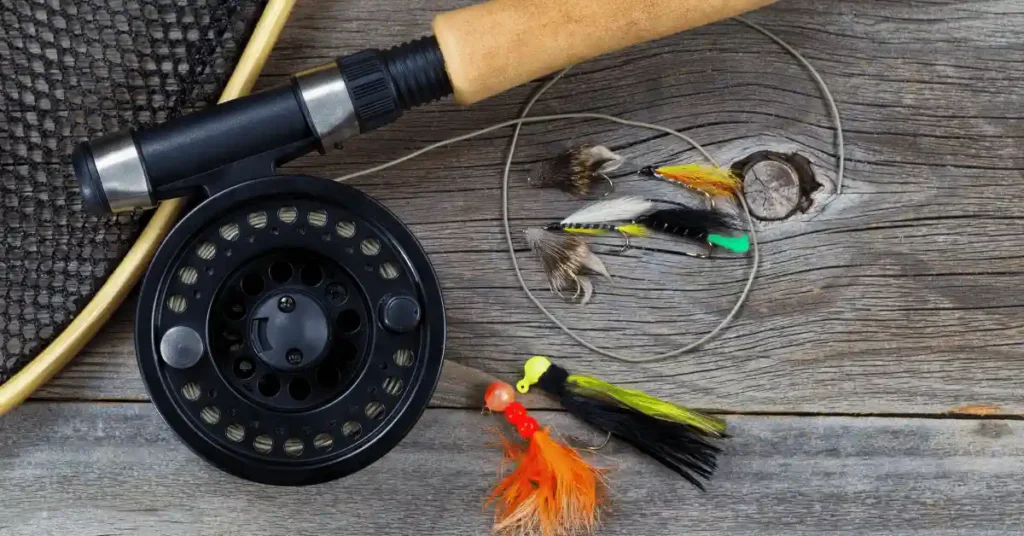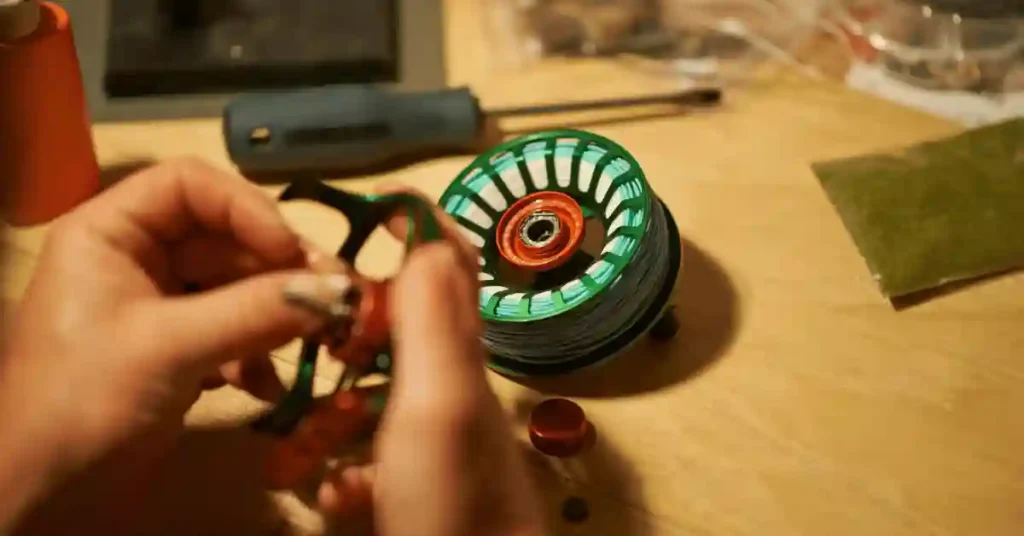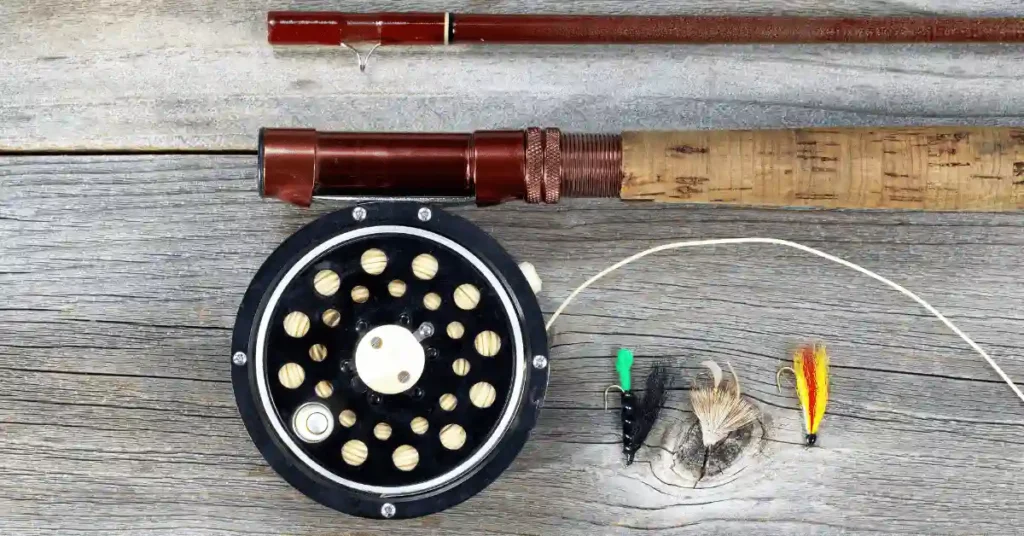Are Fly Fishing Reels Reversible? Everything You need to Know

Fly fishing reels are one of the unknown heroes of a fly fishing outfit. While rods and lines often take the spotlight, it’s important not to overlook the features and functionality of fly reels.
When I started using the fly reels, I thought if they could be reversed. Since I don’t use a specific casting style and prefer a right-hand retrieve, this was important to me.
I was happy to find out that they were the answer. In this guide, I am going to share it with you.
What is a Fly Reels?
A fly reel is a cylindrical device that attaches to the bottom of a fly fishing rod. Its primary function is to store and retrieve the fly line, providing control and tension during the casting and reeling process.

Traditional fly reels have a spinning spool that turns as you reel the line in or let it out. You control this spinning with a handle or crank on the reel.
The reel also has a drag system that lets you add resistance to stop the line from breaking when a fish pulls on it.
Can You Reverse a Fly Fishing Reel?
Yes, most modern fly fishing reels are designed to be reversible. This means you can change which way you reel in the line to suit your preference.

The steps to reverse the direction may vary a bit depending on the reel you have, but the main idea is the same.
How to Reverse a Fly Reel?
Reversing a fly fishing reel isn’t always the same for every brand. Each company may have its own way of doing it. However, the general idea is similar across all reels. Here’s how you can do it:
- 1. First, split the reel in two. Look for a lever or lock on the side of the reel crank. Push the lever or unscrew the lock to separate the two parts of the reel, called “cheeks.” Hold onto both parts tightly to avoid dropping them.
- 2. Focus on the bigger part of the reel, which usually holds the line. This part likely has the clutch bearing you need to adjust.
- 3. Find the clutch bearing held in place by a flip spring. These parts are usually in the female section of the reel.
Note: In some sealed reel designs, the clutch bearing might be in the male section. You’ll need to open it with a flathead screwdriver, flip the bearing, and seal it back.
- 4. Make sure the flip spring isn’t fully connected. There’s usually a gap in the spring to keep tension. Carefully pry out the part of the spring with the gap, keeping your thumb over the rest of the spring to avoid losing it.
- 5. Once the flip spring is out, you’ll see a nut facing up. Remove it and flip it over to change the retrieve hand.
- 6. Put the flip spring back in place securely.
- 7. Reconnect the male end of the reel into the female end. You should hear a snap, indicating everything is back together correctly.
Note: Remember, these are just general steps. Your reel might be a bit different, so it’s a good idea to check the instructions from the manufacturer or ask someone who knows if you’re not sure what to do.
Considerations When Switching Reeling Direction

When you’re switching the direction you reel in your fly fishing reel, there are some important things to think about:
Respooling the Line
It’s a good idea to re-spool the line when you switch directions. This makes sure the line is put on the reel properly and avoids any problems when you cast or reel.
Take the time to take off the line and back and put it back on in the new direction.
Cleaning and Maintenance
While you’re re-spooling, it’s a good time to clean and take care of your fly line and reel. Use warm water, gentle soap, and soft cloths to clean the line well.
Also, clean and put oil on the reel to keep it working smoothly and lasting a long time.
Adjusting Drag and Tension
When you change the direction in your reel, make sure to check and change the drag and tension settings. The drag should be set so it’s hard enough to stop a fish without breaking the line.
Thinking about these things will help your reel work its best and make your fly fishing better.
Is it Wrong to Switch Hands After Casting?
It’s perfectly fine to switch hands after casting in fly fishing. Some anglers, especially those fishing for saltwater species, prefer to cast and reel in with the same hand for more comfort and power, especially when dealing with larger fish.
However, many freshwater anglers cast with their dominant hand and reel in with the other hand.
This method works well for smaller fish, as it allows for better control and coordination during the fight.
Ultimately, whether to switch hands depends on personal preference and the type of fish you’re targeting.
If you’re going after larger or stronger fish, it might be better to stick to casting and reeling with the same hand for maximum control and power.
Benefits of Reversible Fly Reels

Now that you know fly fishing reels can be reversed, you might wonder why it matters. Here are some reasons why having a reversible fly reel is useful:
- 1. Casting Comfort: Reversing the reel lets you cast with your dominant hand and switch to your non-dominant hand for reeling. This can give you better control and comfort when you cast for a long time.
- 2. Convenience: If you share your fishing gear with others who like to reel in different ways, a reversible reel means everyone can use the same equipment without any problems.
- 3. Versatility: Reversible reels are handy when you’re fishing for different kinds of fish or in different conditions. You can switch your retrieve hand to match the situation you’re fishing in.
- 4. Personal Preference: Some anglers just prefer to reel in a certain way because it feels more comfortable or natural to them. Reversible reels let you choose what works best for you.
Additional Tips for Reversing Reeling Direction
Here are some extra tips to remember when changing the reeling direction of your fly fishing reel:
- 1. Follow the manufacturer’s instructions: Every reel might have specific steps for reversing the retrieval direction. Check the manufacturer’s manual or website for detailed guidance.
- 2. Get help if you need it: If you’re not sure about the process or run into any problems, don’t hesitate to ask a professional angler, visit a fly shop, or consult a reel technician. They can offer advice and make sure everything is done right.
- 3. Practice casting and reeling with the new hand: Once you’ve switched the reeling direction, take some time to practice casting and reeling with your new hand. This will help you get used to the change and become comfortable with it.
- 4. Keep your reel maintained: To keep your reel working smoothly and lasting a long time, make sure to clean it after each fishing trip, add lubrication where needed, and check for any damage or signs of wear.
Final Words
In summary, fly fishing reels can be reversed, allowing you to change the reeling direction to suit your preference.
While the process may vary depending on the reel model, it generally involves disassembling the reel, adjusting the clutch bearing, and putting everything back together correctly.
Switching the reeling direction has several benefits, including improved casting comfort, convenience for sharing equipment, versatility in different fishing situations, and the ability to cater to personal preferences.
However, it’s essential to re-spool the line, clean and maintain the reel, and adjust the drag and tension settings when reversing the retrieve direction.
It’s perfectly fine to switch hands after casting, a common practice among anglers. Ultimately, the choice depends on personal preference and the fishing conditions.
Now that you understand how fly fishing reels can be reversed, you can confidently select and adjust your reel to enhance your fly fishing experience. Happy fishing!
Additional Information: Being a keen fly fisherman, I know how crucial it is to have a reel that matches your casting and reeling style. Reversing the retrieve direction gives you more options to customize and adapt your fishing gear.
Don’t hesitate to try different setups until you find what suits you best. And always remember, fly fishing isn’t just about catching fish—it’s also about enjoying the experience and connecting with nature.

Meet Ibrahim Khan, an avid angler and author in Fishing Teach. He shares his wealth of knowledge from his 16 years of experiences in fishing. His articles are a captivating blend of practical insights and thrilling tales that invite readers into the enchanting world of fishing.
Ibrahim’s guides are your go-to guide in the realm of fishing on this informational site. Hailing from a coastal paradise, Ibrahim’s passion for angling is the heartbeat of his life.
